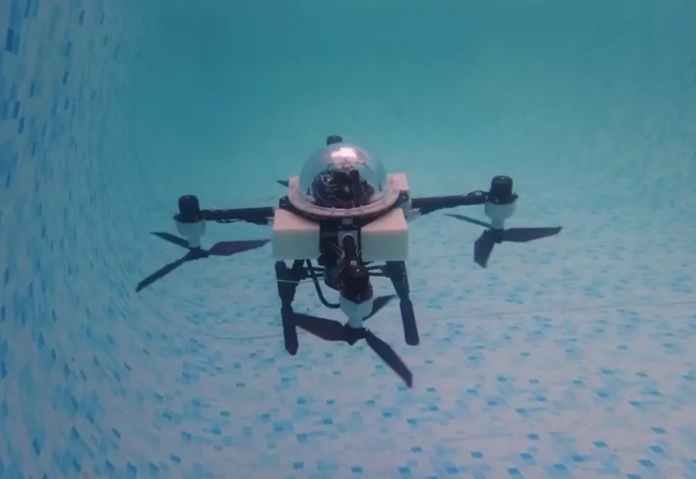
The United States is broadening its high-tech military collaboration with Australia and the United Kingdom, including underwater drones and electronic warfare.
From underwater drones to electronic warfare, the United States is increasing high-tech military collaboration with Australia and the United Kingdom as part of a larger effort to fight China’s rapidly growing influence in the Indo-Pacific. On Friday, Defense Secretary
Lloyd Austin met with defense chiefs from Australia and the United Kingdom in Silicon Valley at the US military’s defense technology base to negotiate a new deal to expand technology cooperation and information sharing. The goal, according to a joint statement, is to “contribute to stability and prosperity in the Indo-Pacific region and beyond.”
Austin spoke with Australian Defense Minister Richard Marles and British Secretary of State for Defense Grant Shapps at the Defense Innovation Unit.
Austin stated following the meeting that the endeavor will, for example, dramatically accelerate the sophistication of underwater drone systems and demonstrate that “we are stronger together.”
The new technological pact is the latest phase in Australia’s expanding military collaboration, which was first announced in 2021. The three countries have sketched out plans for the AUKUS collaboration, which will assist Australia in acquiring a fleet of eight nuclear-powered submarines. The acronym AUKUS stands for Australia, the United Kingdom, and the United States.
Under the terms of the agreement, Australia will purchase three Virginia-class submarines from the United States and collaborate with Britain to build five new AUKUS-class submarines. The subs, which would be powered by US nuclear technology, would not carry nuclear weapons and would be built in Adelaide, Australia, with the first one expected to be completed around 2040.
According to Marles, the submarine program has made tremendous progress. He noted that Australia, as an island nation, requires improved underwater drones and precise strike capabilities.
Shapps also stated that with China “undermining freedom of navigation in the Indo-Pacific, we’ve never had a greater need for more innovation.” He stressed the importance of open sea navigation, notably in the Pacific and the South China Sea.
According to authorities, Australian Navy members have already begun nuclear power training at US military academies.
Earlier this year, the United States declared that it would help Australia build guided missiles and rockets for both countries within two years. They agreed to collaborate on the construction of guided multiple-launch rocket systems in Australia by 2025.
Growing concerns over China’s enormous defense budget and quickly expanding military presence in the region have fueled the nations’ increased collaboration. Last year, Beijing signed a security treaty with the Solomon Islands, raising the likelihood of establishing a Chinese naval base there.
The United States has strengthened its personnel presence in the region, as well as military exercises and other activities. Trade, US support for self-governing Taiwan, Beijing’s military buildup on a series of manufactured islands, and a number of provocative aircraft and ship encounters have all soured US-China ties in recent years.
The new agreement also establishes a series of military exercises involving the use of underwater and surface maritime drones, as well as improving the three countries’ ability to share intelligence and data obtained by their sonobuoys. The buoys are used to detect submarines and other underwater objects.
It also proposes expanding the use of artificial intelligence, including on P-8A surveillance planes, to interpret data from buoys more quickly in order to boost anti-submarine warfare. It also states that the three countries would build new radar stations to improve their ability to identify and track objects in deep space.
High-tech demonstrations were set up across a large parking lot at DIU and inside the headquarters, allowing Austin to see a number of projects being developed, including a virtual training device that will help Ukrainian pilots learn to fly F-16 fighter jets and swarming drones being developed for warfighters. The initiatives are not linked to the Australian accord, but they do reflect the continual effort by the three nations to improve technology—an area where China often has the lead.
Austin was able to observe a swarm of five drones lift off from the sidewalk and hover above the bystanders as he moved through the exhibits, all controlled by a single worker using a small handheld module. The Skydio X2D short-range reconnaissance drones are currently in use in warfare, but the swarming technology and ability to operate them all from a single device are still under development, according to Skydio CEO Adam Bry.
Air Force Maj. Alex Horn exhibited a new portable pilot-training module inside the DIU headquarters, which will allow instructors in the United States to remotely advise pilots overseas using a virtual reality headset. Four “Immersive Training Devices” will be sent to Arizona’s Morris Air National Guard Base next month and will be used to train Ukrainian pilots to fly F-16s.
Horn stated that the devices, which are less expensive than other systems, will help hasten training for Ukrainian pilots who are used to flying Soviet aircraft and require basic F-16 instruction before moving on to cockpit training.
Also read: Organizations should be driven based on people and processes instead of emphasizing technology
Do Follow: CIO News LinkedIn Account | CIO News Facebook | CIO News Youtube | CIO News Twitter
About us:
CIO News, a proprietary of Mercadeo, produces award-winning content and resources for IT leaders across any industry through print articles and recorded video interviews on topics in the technology sector such as Digital Transformation, Artificial Intelligence (AI), Machine Learning (ML), Cloud, Robotics, Cyber-security, Data, Analytics, SOC, SASE, among other technology topics.





